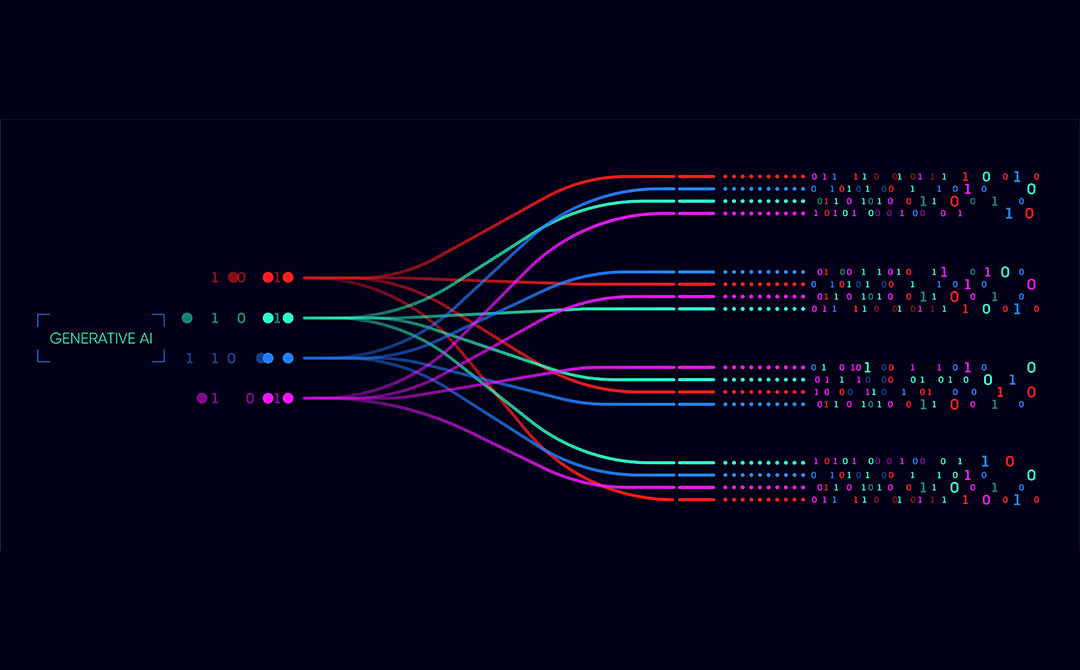
Generative AI distinguishes itself as a technological advancement within the realm of artificial intelligence, characterized by its ability to glean insights from vast datasets and autonomously generate responses. Through the analysis of extensive data, it can discern patterns and trends, empowering it to make informed decisions. Moreover, it possesses the capability to analyze historical data, derive knowledge from it, and adapt its strategies based on evolving circumstances.
Market Growth Projections
The market for Generative AI is projected to achieve a valuation of $22.12 billion by the year 2025.
The McKinsey Global Institute estimates that among industries globally, Gen AI could add the equivalent of $2.6 trillion to $4.4 trillion annually in value across the 63 use cases it analyzed. Among industry sectors, banking is expected to have one of the largest opportunities: an annual potential of $200 billion to $340 billion (equivalent to 9 to 15 percent of operating profits), from increased productivity.
Factors Propelling the Growth of Generative AI
The expansion of Generative AI is driven by several key factors that contribute to its increasing adoption and market growth.
- Advancement in machine learning algorithms
- Growing volume of data
- Reduction in financial cost
Here are the Generative AI use cases on how banks can leverage creative AI to revolutionize operations, enhance risk management, and deliver personalized financial services.
Fraud Detection
- Monitoring transaction specifics like location and device, alongside system data
- Continuous enhancement of detection algorithms
- Proactive measures against evolving fraud schemes
Risk Management
- Mitigate losses stemming from inadequate management practices
- Swiftly identify potential risks in real-time
Credit Analysis
- Analyze customer credit scores and financial histories
- Facilitate real-time loan decision-making processes
Data Privacy
- Generate synthetic customer data and train machine learning models
- Assists banks in assessing customer eligibility
- Prioritize data privacy
Marketing And Lead Generation
- Analyze customer preferences and online behaviors
- Segment leads into distinct groups
- Customize marketing campaigns effectively
Financial Forecast
- Establish a knowledge repository from historical data
- Facilitates informed decision-making for the future
Underwriting
- Automation of credit memo sections
- Executive summary, business description, and sector analysis
Overcome 5 Key Challenges with a New Technology Architecture to Unlock Generative AI's Endless Potential
Empowering Banks with Generative AI: Building A Strategic Partnership for Optimal Results
Generative AI for banking presents a double-edged sword. While it can streamline tasks, improve risk assessment, and personalize financial products, its implementation comes with significant hurdles. Banks must navigate the murky waters of data bias, ensuring algorithms don't perpetuate historical inequalities in loan approvals or investment opportunities. The "black box" nature of some generative models makes it difficult to explain their decision-making processes, raising concerns about fairness and transparency for customers and regulators. Additionally, the security risks of synthetically generated data loom large. Deepfakes and financial fraud could become more sophisticated, demanding robust cybersecurity measures. Finally, the ever-evolving regulatory landscape surrounding AI adds another layer of complexity, requiring banks to constantly adapt and ensure compliance. Addressing these challenges will be crucial for banks to reap the full benefits of Gen AI consulting while mitigating their potential pitfalls.
However, partnering with a reputed Gen AI service provider can be a powerful asset for banks navigating complex enterprise environments by offering several key benefits:
Understanding the Complexities
Domain Expertise: A Generative AI development company with a strong track record in financial services understands the intricate regulations, data security needs, and legacy systems that banks grapple with. This expertise allows them to tailor their Gen AI services to integrate seamlessly while adhering to compliance standards.
Needs Assessment: Generative AI for enterprises conducts a thorough needs assessment to identify the specific pain points and opportunities in the bank's complex environment. This analysis ensures the AI solutions address the most critical challenges and unlock the most significant value.
Gen AI Solutions Tailored for Banking
Customizable Solutions: AI solutions companies can develop and implement custom AI models that address the bank's unique needs. This goes beyond off-the-shelf solutions to truly leverage the power of AI for tasks specific to the bank's operations.
Legacy System Integration: Many banks have complex legacy systems that can be a hurdle to AI adoption. The AI solutions company can bridge this gap by ensuring the new AI models integrate smoothly with existing infrastructure, minimizing disruption, and maximizing ROI.
Expertise in AI Implementation
Data Management: Banks often have vast amounts of data, but extracting meaningful insights can be challenging. The AI solutions company can provide expertise in data management, cleaning, and preparation to ensure the AI models have access to high-quality data for optimal performance.
Model Explainability: In complex environments, transparency and explainability of AI models are crucial. The AI solutions company can develop models that are not just accurate but also provide clear reasoning behind their decisions, fostering trust with regulators and customers.
Ongoing Support
Model Maintenance: AI models require ongoing monitoring and maintenance to ensure they continue to perform effectively. The AI solutions company can provide ongoing support to keep the models up-to-date and functioning optimally.
Futureproofing: The AI landscape is constantly evolving. The solutions company can offer expertise in staying ahead of the curve, ensuring the bank's AI strategy remains relevant and adaptable to future technological advancements.
By leveraging these capabilities, a Generative AI development company can become a trusted partner for banks in complex environments, helping them achieve the best results through customized, secure, and effective AI implementation.
Conclusion
The transformative potential of GenAI services in the banking sector is evident, promising to revolutionize operations by enhancing efficiency, precision, and profitability. Through the automation of manual processes, bolstered risk assessment, enriched customer experiences, and robust fraud prevention mechanisms, Generative AI stands poised to streamline banking operations, curtail expenses, and elevate customer satisfaction.
Embracing technology and harnessing AI creativity are imperative steps for banks to remain competitive in today's swiftly evolving industry landscape. By embracing Generative AI, banks can unlock a plethora of benefits and seize opportunities for growth, while also effectively managing the challenges and risks associated with its implementation.
Overall, Generative AI for banking holds the potential to reshape the banking industry, profoundly impacting operations and customer interactions. As technology advances and opens new avenues for innovation and enhancement, the banking sector finds itself at an exciting juncture, poised to embrace transformative change for the better. While the possibilities for leveraging Generative AI are vast and unforeseen, one thing remains clear: collaboration in shaping this future is key.
Let's embark on this journey together and shape the future of banking collaboratively!

AUTHOR - FOLLOW
Editorial Team
Tredence
Topic Tags




